Un Certain Regard – 12 Films That Won Cannes
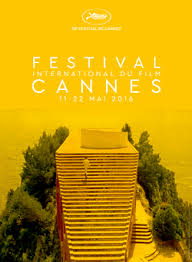
The Cannes Film Festival has had quite the long and varied history to say the very least. Begun ostensibly as a reaction to the Venice Film Festival, Cannes’ official inauguration was delayed by the onset of the Second World War; and even since then it has experienced one or two hiccups over the years (most notably in 1968 when the festival was cut short owing to several protests and withdrawals brought about by the seismic events of May 1968). In more recent times there has been less of the turmoil, but, even so, the odd whiff of controversy comes along every now and again in the form of a dubious winner or eyebrow-raising comment in the Salle de Presse. Recall if you will such moments as Francis Ford Coppola’s fighting words to the press corps in 1979 when unveiling his long-in-gestation Apocalypse Now; or Simone Silva’s disrobing in the presence of Robert Mitchum in 1954. More recently in 2011 we had Lars von Trier putting foot firmly in mouth and being declared persona non grata in the process. Controversial winners down through the years have included Fellini’s La Dolce Vita and Bunuel’s Viridiana.
It’s not possible to dissect every moment of Cannes lore in the space here, so what I’ve tried to do is select some notable winners over the years to give a flavour of what Cannes juries may be looking for as they seek to agree on the best film of the festival. The top award for a film at the festival is the Palme d’Or, though you will note (as per below) that it hasn’t always been called the Palme d’Or; and indeed it hasn’t always gone to a single film. Juries every year are made up of different members; they won’t always agree, and compromises have sometimes been the order of the day. However, below are twelve films I’ve selected which have won the top award at Cannes. I base my choices on both personal preference and also notable winners in the history of this venerable festival. See if you agree with me.
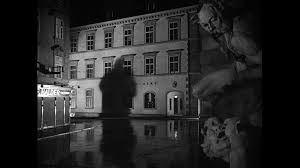
The Third Man (1949 – winner of the Grand Prix)
One of the greatest films of all time and a deserved winner of the Grand Prix at Cannes in 1949, this tells the story of a second-rate novelist Holly Martins (Joseph Cotton) who travels to post-war Vienna to look up his old friend Harry Lime (Orson Welles). The trouble is Harry is reported dead on his arrival, and Martins attempts to unravel the mystery behind his bizarre and sudden demise. There is so much to admire in Carol Reed’s atmospheric adaptation of the Graham Greene novel, not least the peerless performances, stunning cinematography by Robert Krasker, and that very familiar zither-led score by Anton Karas. Welles’s famous cuckoo clock speech is one of several highlights. The Wiener Riesenrad is one of many Viennese landmarks to appear in the film. And thank goodness director Reed and producer David O. Selznick prevailed upon Greene to retain the film’s more downbeat ending. It’s a perfect finale to a quite flawless film.
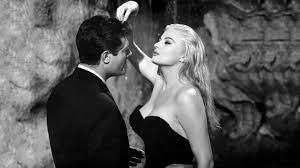
La Dolce Vita (1960 – winner of the Palme d’Or)
Fellini’s ode to a decadent Rome was the subject of some controversy way back in 1960. The Catholic church certainly did not approve of it, and many contemporaries derided it as an overly negative portrayal of the new Rome following the Italian economic miracle of the 1950s. Nevertheless, La Dolce Vita’s place in cinematic history is long cemented. It is arguably Fellini’s best-known film in a highly illustrious career and it also provided Marcello Mastroianni with one of his most iconic roles. The great Italian actor plays a journalist moving through the so-called sweet life of a neo-modern Rome as he seeks meaning and truth, love and happiness. These aspirations elude him of course and we are presented with many examples of the profane, self-indulgent lifestyle Fellini sees coursing through the modern and evolving urban landscape. The character of Paparazzo (the news photographer played by Walter Santesso) inspired the coining of the word paparazzi to describe such intrusive photographers. The majority of the film was shot at the legendary Cinecitta Studios in Rome, including authentic recreations of Via Veneto and the dome of St. Peter’s. The famous Trevi Fountain sequence was shot over a week during winter in Rome. Has been cited by many filmmakers as a key influence on their work, including Woody Allen.
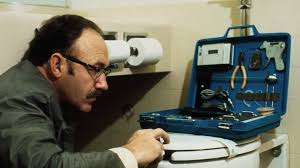
The Conversation (1974 – winner of the Grand Prix)
Francis Ford Coppola was on a winning streak in the early 1970s. His first two Godfather films had triumphed at the Academy Awards and then this one – a tale of a reclusive surveillance expert whose latest job could lead to a potential murder – won the top prize at the 27th edition of the Cannes Film Festival. Gene Hackman is perfectly cast as Harry Caul and the great actor channels his mounting paranoia in a most affecting way. Other notables in the cast include Frederic Forrest, John Cazale, Robert Duvall and a young Harrison Ford. Coppola cited Michelangelo Antonioni’s 1966 film Blowup (involving a photographer who believes he has captured a murder on film) as being a key influence on this one. He was also most anxious at the time to emphasise that the Watergate scandal, which followed soon after this film’s release, was not a premise for the storyline. Brian De Palma’s 1981 film Blow Out revisited similar themes and also explored the moral dilemma the individual faces when he stumbles upon a shady conspiracy. Coppola’s version though remains much the better of the two.
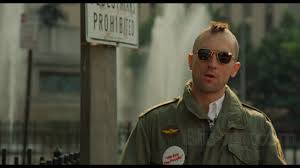
Taxi Driver (1976 – winner of the Palme d’Or)
‘You talkin’ to me?’ The opening shot of a taxi cab emerging from clouds of steam to the strains of Bernard Herrmann’s final score more than set the atmospheric intent of this one. And it pretty much does not let up from the get-go in terms of its depiction of the squalid urban environs through which Travis Bickle – Vietnam veteran – traverses during his night shifts as the taxi driver of the title. Scorsese’s seminal film has been interpreted in many ways over the years and there still remain differences of opinion as to what it represents. It’s an examination of American society in the post-Vietnam era in which an affected loner seeks to do right in a deeply flawed world populated by cocky pimps, cliché-spewing politicians and impassive co-workers, right? Well, yes, those things and a lot more besides. Let’s also not forget that the screenwriter himself Paul Schrader was between relationships at the time with no fixed abode. He was deeply influenced by Dostoyevsky’s Notes from Underground and also the diaries of one Arthur Bremer – who attempted unsuccessfully to assassinate presidential candidate George Wallace in 1972. It’s also noticeable how Scorsese’s Catholic background permeates this one – Travis may be viewed as an avenging angel seeking to purge himself and the milieu he sees around him through his final cathartic act of rescuing Jodie Foster’s Iris from the clutches of the morally deviant Sport (Harvey Keitel). The ending of course is deeply ambiguous and serves to call into question all that we, the viewer, have seen to this point. Is Travis really a hero now? Has he satisfied his own moral code or does he remain dangerously unhinged? Is this what redemption really looks like? Interesting to note that the president of the jury at Cannes the year this won was none other than the great Tennessee Williams himself. I wonder what he made of it all, in particular the finale. In any event, he and his fellow jurors must have liked it as they awarded it the festival’s highest honour.
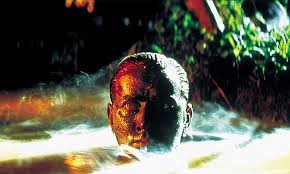
Apocalypse Now (1979 – winner of the Palme d’Or)
Francis Ford Coppola took top prize at the festival for the second time in the 1970s when he brought his much-delayed, and troubled, Vietnam film to the French Riviera town. An important point of clarification that must be added here though – Apocalypse Now actually shared the Palme d’Or this particular year with Volker Schlondorff’s The Tin Drum. Both films, incidentally, were distributed by United Artists which itself would soon come to grief with the even more troubled Heaven’s Gate. And as for Apocalypse itself – well we know so much about the backdrop to the production now which included Harvey Keitel’s sacking after just a few days’ work, his replacement Martin Sheen suffering a breakdown on set (and subsequent heart attack), the helicopters loaned from the Philippines authorities being frequently called away to fight insurgents on another part of the island, and, of course, Marlon Brando turning up on set, overweight and having not read the source material (Joseph Conrad’s Heart of Darkness). If anything the documentary made by Coppola’s wife Eleanor, Hearts of Darkness, is just as good as Apocalypse itself; indeed one could argue that there is more drama in the documentary than the actual feature film. For the record, Apocalypse was designated a ‘work in progress’ when it was screened at Cannes. And there are a few other instances in Cannes history when films shared the top prize, most recently in 1997. One or two more points of note: watch out for a young Laurence Fishburne as part of the boat crew. And if you have a choice of watching the original theatrical version or the redux version, I would suggest the original theatrical version in this particular instance. The redux version has a lot of unnecessary clunky scenes, including the French plantation scene which, in my humble opinion at least, is extraneous and does absolutely nothing at all to advance the story.
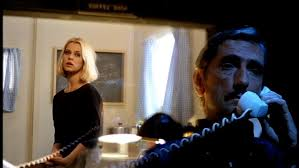
Paris, Texas (1984 – winner of the Palme d’Or)
Wim Wenders’ 1984 winner is a deeply moving tale of a father (Harry Dean Stanton) seeking to reconcile with his son and reunite him with his mother (Nastassja Kinski). It was a co-production between France and Germany and takes place in the United States. The film delivers a quiet unique perspective on America, its landscape and culture. The Paris, Texas of the title is a place that seems to be out of reach, a possible metaphor for the doomed love of Travis for his much younger wife and the son who is now living with his brother. The cinematography is by Wenders’s long-time collaborator Robby Muller. The distinctive score is by Ry Cooder. Especially affecting is the scene in which Stanton confronts his estranged wife, Kinski, in the peep show club. The Scottish bands Travis and Texas both took their names from the film.
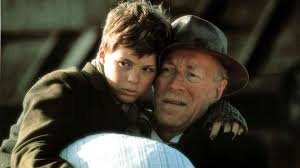
Pelle the Conqueror (1988 – winner of the Palme d’Or)
Bille August’s 1988 winner tells the story of a father and son who arrive in Denmark from Sweden during the middle of the 19th century. They gain employment on a farm, but are treated as lower class citizens. The film essays their interactions with others on the farm as they both dream of a better life in this new country. This is a quite beautiful film about growing up and the bond between father and son is perfectly registered in the central performances, particularly that of the great Max von Sydow. The film also went on to deservedly win the Golden Globe and Oscar for Best Foreign Language film. The Killing’s Sofie Grabol features in a brief role.
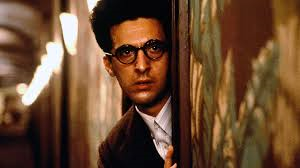
Barton Fink (1991 – winner of the Palme d’Or)
The Coen brothers based this one on their experiences of writer’s block whilst working on the earlier Miller’s Crossing. Barton Fink, a New York city playwright (John Turturro), whose latest work has received critical praise on Broadway, is summoned to Hollywood to work on film scripts for a studio. Upon arrival in Tinseltown, he checks into a strangely deserted hotel and later meets his enigmatic and burly neighbour, an insurance salesman played by John Goodman. Barton meets with the head of the studio and is assigned a wrestling picture as his first job. But he struggles to get beyond the first few lines of the script. He fears that he will lose his precious connection with the ‘common man’, a source of much of his artistic inspiration to date. Barton Fink is perhaps a film that resists categorisation. On the one hand, it has the feel of a film noir in its setting and style; on the other hand, it can also be variously described as a comedy, a nightmare, a satire on the Hollywood studio system. Lead actor Turturro has also referred to it as a coming-of-age story and, if that’s the case, then it is a quite unique one in that regard. The film swept the boards at the 1991 festival winning the Palme d’Or, Best Director for Joel Coen and Best Actor for John Turturro. Following this sweep, it was decided by the festival organisers that no one film should win as many awards again to the detriment of other entries. Ever since this time the maximum number of awards an in-competition film at Cannes is allowed to win is two.
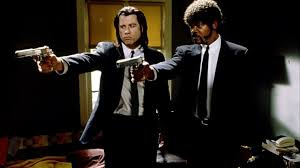
Pulp Fiction (1994 – winner of the Palme d’Or)
Quentin Tarantino really hit the big time with this one which followed hot on the heels of the promise he’d displayed in Reservoir Dogs two years earlier. The plot of Pulp Fiction has been endlessly dissected ever since, so I’m not going to add to that, but needless to say that Tarantino executes his non-linear approach to narrative cinema with great aplomb. He was aided in this design by a terrific cast, in particular a resurgent John Travolta, an emerging Samuel L. Jackson, and a cheeky, and alluring, Uma Thurman. Highlights include Jackson’s biblical rhetoric (Ezekiel 25:17), Travolta and Thurman’s on-screen chemistry, and Christopher Walken’s brief but highly resonant appearance (The Gold Watch scene). The president of the jury that awarded the Palme d’Or to Tarantino and his collaborators was none other than Clint Eastwood himself. I wonder if he or his fellow jury members had any theories as to the contents of that mysterious briefcase.
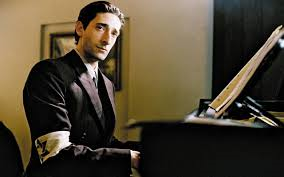
The Pianist (2002 – winner of the Palme d’Or)
Based on the memoir by the Polish pianist and composer Wladyslaw Szpilman, this is one of the finest films about the Holocaust and it is all the more resonant when one considers how director Roman Polanski was himself a survivor of the Krakow Ghetto. Adrien Brody is pitch-perfect as the central character evading the German forces and it’s a truly remarkable story on the whole about survival and endurance. For long sections of the film there is little dialogue and the film is centred on Spilman’s reaction and horror to the atrocities he sees all around him. Adrien Brody did not win the Best Actor award at Cannes, but he would go on to win the Oscar for Best Actor for his performance and it was well deserved. Oscars also went to Polanski for Best Director and Ronald Harwood for Best Adapted Screenplay. The Cannes jury that awarded this one the festival’s top honour included David Lynch and Sharon Stone.
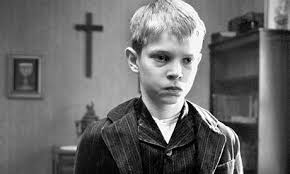
The White Ribbon (2009 – winner of the Palme d’Or)
Austrian Michael Haneke won his first Palme d’Or at the 62nd edition of the festival for this one – an examination of what the director himself refers to as, ‘the roots of evil.’ The setting is a north German village just prior to the outbreak of the First World War. Several unexplained events take place, including a horse-riding injury to the local doctor, a fatal accident at a sawmill, a brutal assault on the local baron’s son, and a mysterious fire. The disquieting events cause the local community to look inward and ask itself whom within might possibly be responsible for such evil deeds. There are overt suggestions as to the culprits, but the film does not disclose them formally, nor does it absolutely state what their reasons for such violence and cruelty might be; instead such conclusions and interpretations are left to us the viewer. All in all it’s a dark portrayal of society in a microcosm as a country, and indeed Europe as a whole, lurches forward towards a pivotal moment in history.
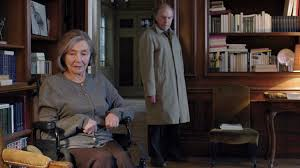
Amour (2012 – winner of the Palme d’Or)
Michael Haneke won his second Palme d’Or in the space of just a few short years for this one. Amour is an entirely different film to his previous winner The White Ribbon in that it essays the love and devotion of a husband for his debilitated wife. Jean-Louis Trintignant and Emmanuelle Riva play the elderly couple Anne and Georges, both retired music teachers. Following a series of strokes, Anne is confined to a wheelchair and gradually becomes more and more dependent on her hard-pressed spouse. Haneke apparently based this scenario on a relative of his own who did not wish to enter a nursing home, but instead asked that she die with some semblance of dignity. He said the film itself is not intended to be a reflection on old age and death, but rather, ‘the question of how to deal with the suffering of a loved one.’ At the heart and centre of Amour are deeply affecting performances by the two leads, Emmanuelle Riva (Hiroshima Mon Amour) in particular. Isabelle Huppert features as the couple’s daughter.
Let’s take a wild guess – the winning film will this year be from Iran. Fiver?!
It’s always so difficult to predict a winner for Cannes, isn’t it? Especially since so many of the films accepted to compete are world premieres and hence there’s no word-of-mouth about them. Is the Iranian film the current favourite?